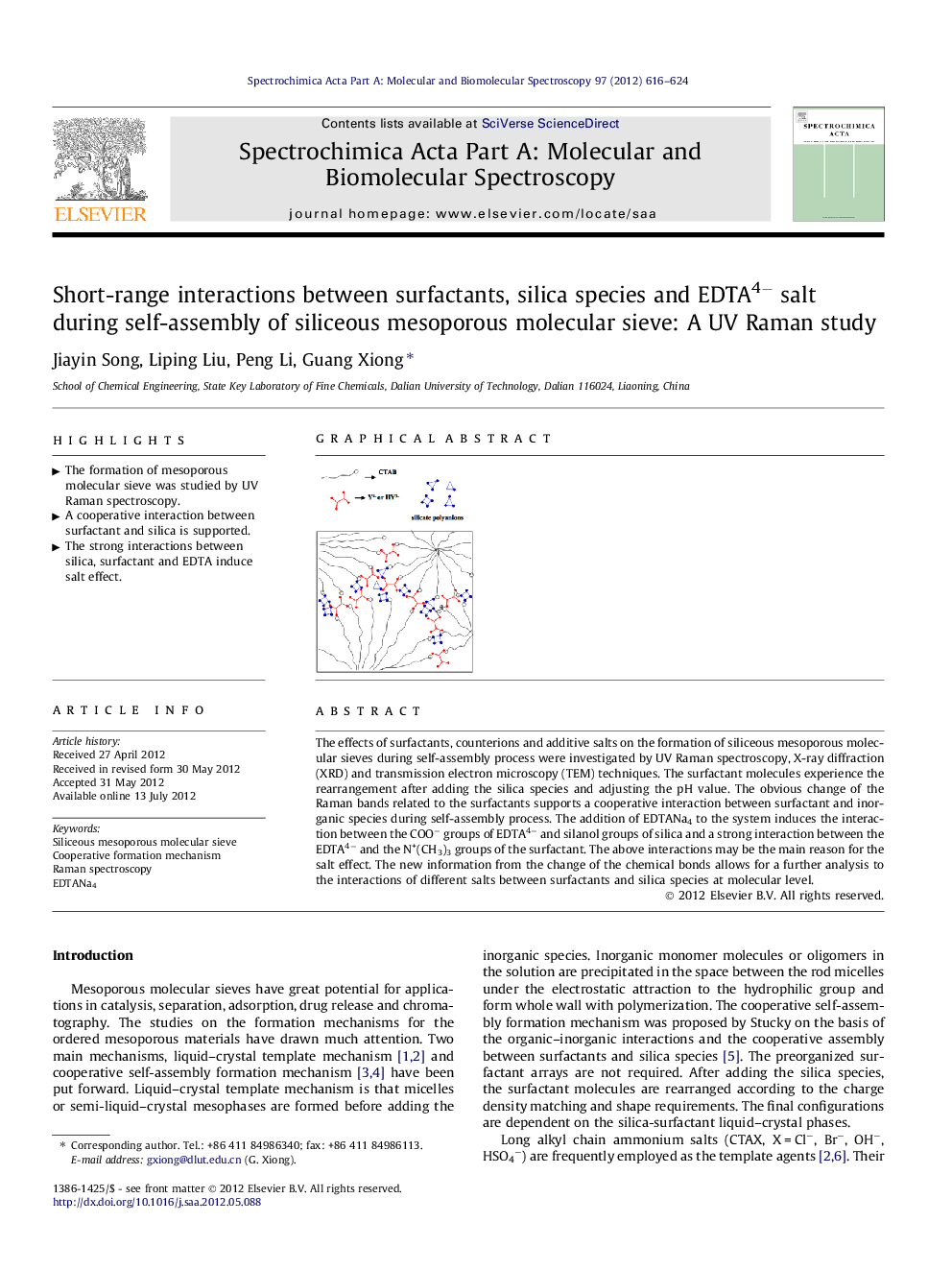| Article ID | Journal | Published Year | Pages | File Type |
|---|---|---|---|---|
| 1232354 | Spectrochimica Acta Part A: Molecular and Biomolecular Spectroscopy | 2012 | 9 Pages |
The effects of surfactants, counterions and additive salts on the formation of siliceous mesoporous molecular sieves during self-assembly process were investigated by UV Raman spectroscopy, X-ray diffraction (XRD) and transmission electron microscopy (TEM) techniques. The surfactant molecules experience the rearrangement after adding the silica species and adjusting the pH value. The obvious change of the Raman bands related to the surfactants supports a cooperative interaction between surfactant and inorganic species during self-assembly process. The addition of EDTANa4 to the system induces the interaction between the COO− groups of EDTA4− and silanol groups of silica and a strong interaction between the EDTA4− and the N+(CH3)3 groups of the surfactant. The above interactions may be the main reason for the salt effect. The new information from the change of the chemical bonds allows for a further analysis to the interactions of different salts between surfactants and silica species at molecular level.
Graphical abstractFigure optionsDownload full-size imageDownload as PowerPoint slideHighlights► The formation of mesoporous molecular sieve was studied by UV Raman spectroscopy. ► A cooperative interaction between surfactant and silica is supported. ► The strong interactions between silica, surfactant and EDTA induce salt effect.
